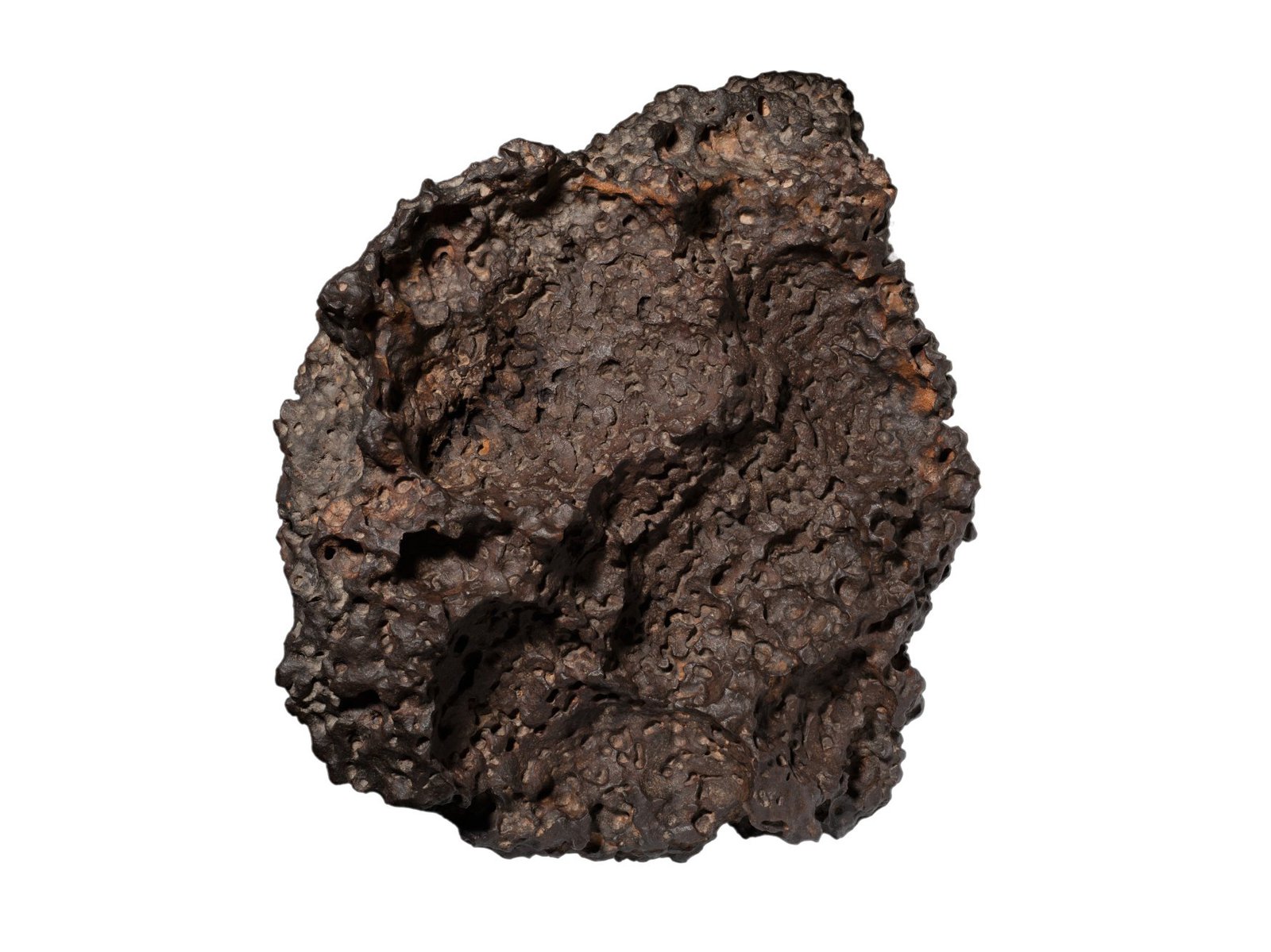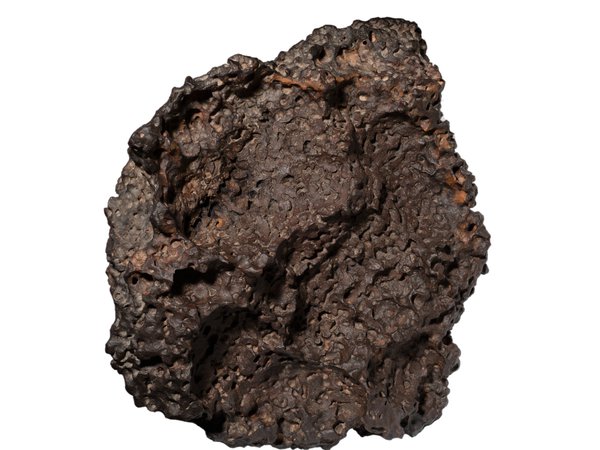Rocks from space
Rocks and minerals hold the secrets to the origins and composition of our solar system. They are a fossil record of planetary evolution and can tell us about the processes that formed planet Earth.


Early Earth
Our solar system started as a massive swirling cloud of dust and gas circling the Sun about 4.6 billion years ago. The dust particles collided with each other and formed larger bits of rock, which eventually formed the planets, including Earth.
Young Earth was not like it is today. At first, the surface was covered with magma, making it glowing hot, and oxygen was rare in the atmosphere. Planetary leftovers rained down as meteorites. Over time, this first crust was destroyed, leaving only tiny zircons found in Greenland, Australia and Canada, providing us with rare glimpses into Earth’s earliest days.

Survivors from deep time
Rocks and minerals are like a fossil record of planetary evolution. From them, we can tease secrets about our solar system and the processes that formed it, including our own planet Earth.
Some very rare specimens are survivors from Earth’s first crust and clues to a vanished world. Most of the elements and minerals that formed our planet still exist but lie well beyond our reach, deep below the crust. Occasionally, some return to the surface during volcanic eruptions.
We also find extra-terrestrial rocks and minerals. The space rocks, ice and metal lumps that didn’t form planets remained as asteroids, comets and meteors. These leftovers from the birth of our solar system may be drawn to Earth by its gravity. Most end their long existence in our protective atmosphere, but some survive.

Meteorites
Most meteorites are as old as the solar system, some being 4.6 billion years old.
Rare, much younger types may be pieces struck off Mars or the Moon. Most come from the asteroid belt between the orbits of Mars and Jupiter, which has debris ranging from dust-sized particles to asteroids many kilometres in diameter.
Over 100 tonnes of meteoritic debris fall to Earth each day. Some burn up as they plunge through the atmosphere. Those that survive are found as meteorites. Most have a smooth outer surface, sometimes with small depressions, caused by partial melting and wearing away during their passage through our atmosphere. The largest known meteorite weighs 60 tonnes and still sits where it fell, at Hoba, Namibia.
The below iron meteorite is part of the ‘Mundrabilla’ fall of meteorites on the Nullarbor Plain of Western Australia. The date of the fall is unknown but a number of pieces have been recovered over many years with a total mass of about 24 tonnes.
The first small Mundrabilla meteorite was found in 1911 by a member of the Transcontinental Railway Survey Party; other pieces were found in 1918 and the 1970s. The bigger masses include the largest meteorite found in Australia, at 11.5 tonnes, and also a 5 tonne piece, both found by geologists in March 1966.

Types of Meteorites
Depending on how much metal or stony silicate material is present, meteorites can be stones (most common), irons (second-most common) or stony-irons (least common). The minerals which make up the bulk of meteorite compositions include seven common Earth minerals and three found only in meteorites; taenite, kamacite (iron-nickel alloys) and schreibersite (iron, nickel phosphide).

Stones
Stones are made up of silicate minerals like pyroxenes, olivine and feldspar, common on Earth. Most have a little nickel-iron alloy and contain chondrules which are round mineral structures crystallised from early hot dust and gases that condensed at the time the planets were created. Those with chondrules are called chondrites and those without, the rarer kind, are called achondrites which can originate from asteroids or come from the Moon or Mars.

Irons
The criss-cross patterns seen on slices of some iron meteorites are called Widmanstätten structures. They appear when the iron is etched with acid. The iron alloy has crystal plates with different amounts of nickel. These etch at different rates, revealing their growth patterns. These patterns show that the hot metal cooled slowly into large crystals deep inside the parent body.

Stony-irons
Stony-irons are made up of nickel-iron with an equal amount of silicate minerals like olivine (pallasites), or olivine, pyroxene and feldspar (mesosiderites).
Meteorites from Mars and the Moon
Most stony meteorites found on Earth originated from asteroids, but very rare ones have come from the Moon or Mars. We know their origin because their mineralogy and chemical composition was compared to rock samples collected during space missions.
These meteorites reached Earth after they were ejected from their source by an impact event. Their dates are much younger than those of other meteorites. Most Martian meteorites are between 150 and 575 million years old and lunar meteorites usually younger than 20 million years.

Meteorite impacts
A large meteorite can sometimes create enough heat, pressure and shock to radically change the rocks, soils or sand it impacts. These new metamorphic rocks are known as impactites and include melted rocks, shocked minerals and shatter cones.
Tektites are pebble-like glassy impactites that formed when soil and rocks fused into molten droplets which ‘splashed’ into the atmosphere. During their return flight they formed characteristic and often aerodynamic shapes

Shatter cones (impact structures) in sandstone from Gosse’s Bluff crater, Northern Territory, Australia. Shatter cones form only in bedrock beneath large meteorite impacts or nuclear explosions. The massive pressure forms a series of small concentric cone-shaped fractures throughout the rock.
Image: Stuart Humphreys © Australian MuseumAustralian tektites - Australites
The youngest and most widespread tektite shower forms the Australasian field. Australites have been used by Aboriginal Australians for over 30,000 years. The earliest record of their scientific study is a specimen found in 1836 by Sir Thomas Mitchell and later given to Charles Darwin. Australites are about 800,000 years old but are found in soils only 16,000 years old as they eroded out of older sediments.
Comets
Comets are dusty ice balls from the frozen outer solar regions that orbit around the Sun, containing frozen gasses, dust and organic matter. Comets contain clues about the beginning of the solar system, but if they strike Earth they almost always explode and vaporise.
However, some carbonaceous chondrites are believed to be remains of comets as they seem to have originated in the outer cooler parts of our solar system. Carbonaceous chondrites have enormous scientific and popular interest because they contain carbon in organic chemicals similar to those in living matter and have a strange bituminous smell.

Earth's oldest minerals and rocks
Earth’s oldest minerals
Inside Jack Hills quartzites are Earth’s oldest known minerals, tiny zircon crystals dating 4.39 billion years old. The zircon first formed in continental crust rocks in the Hadean eon. After weathering, the grains became part of sedimentary rock which later metamorphosed to quartzite.
The cores of these ancient zircons preserve the chemical characteristics of the rock in which they formed. Geologists use these tiny clues to glimpse Earth’s earliest environment – it appears Hadean Earth was less hostile than previously believed, although the degree of ‘hostility’ is debated.
Earth’s oldest rocks
Acasta and Itsaq gneisses are Earth’s oldest dated rocks and rare traces of its early crust as 99.9999% of this ancient crust was destroyed by melting and erosion over billions of years.
The Acasta gneiss was formed during the Hadean, the earliest eon in Earth's history, probably from highly metamorphosed granite from continental crust. The Itsaq Gneiss Complex is dominated by gneisses formed between 3.87 and 3.62 billion years ago during the Archean (Earth’s second eon). It was the first body of Earth’s crust discovered older than 3.6 billion years.


